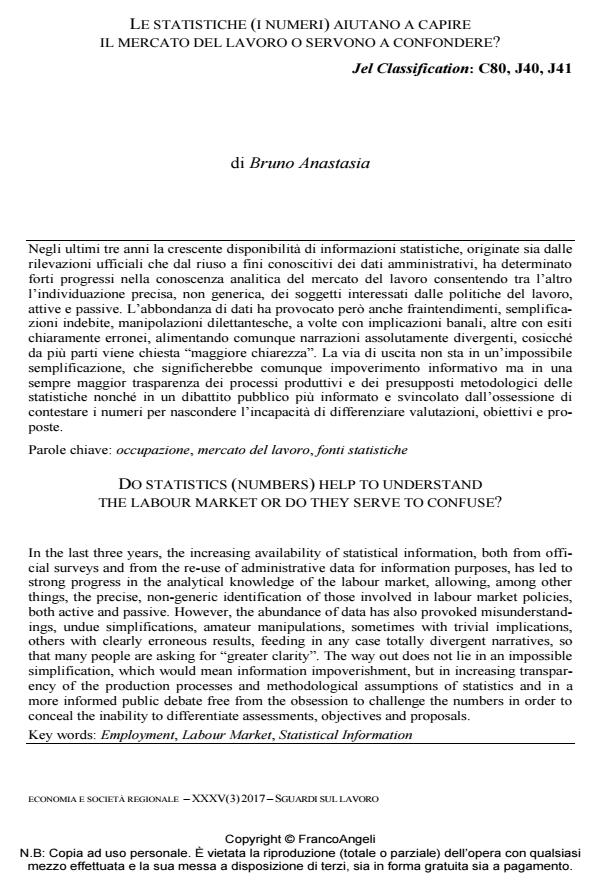Do statistics (numbers) help to understand the labour market or do they serve to confuse?
Journal title ECONOMIA E SOCIETÀ REGIONALE
Author/s Bruno Anastasia
Publishing Year 2018 Issue 2017/3
Language Italian Pages 21 P. 101-121 File size 543 KB
DOI 10.3280/ES2017-003005
DOI is like a bar code for intellectual property: to have more infomation
click here
Below, you can see the article first page
If you want to buy this article in PDF format, you can do it, following the instructions to buy download credits

FrancoAngeli is member of Publishers International Linking Association, Inc (PILA), a not-for-profit association which run the CrossRef service enabling links to and from online scholarly content.
In the last three years, the increasing availability of statistical information, both from official surveys and from the re-use of administrative data for information purposes, has led to strong progress in the analytical knowledge of the labour market, allowing, among other things, the precise, non-generic identification of those involved in labour market policies, both active and passive. However, the abundance of data has also provoked misunderstandings, undue simplifications, amateur manipulations, sometimes with trivial implications, others with clearly erroneous results, feeding in any case totally divergent narratives, so that many people are asking for "greater clarity". The way out does not lie in an impossible simplification, which would mean information impoverishment, but in increasing transparency of the production processes and methodological assumptions of statistics and in a more informed public debate free from the obsession to challenge the numbers in order to conceal the inability to differentiate assessments, objectives and proposals.
Keywords: Employment, Labour Market, Statistical Information
Jel codes: C80, J40, J41
- Noterelle su un lavoro lungo quarant'anni Bruno Anastasia, in ECONOMIA E SOCIETÀ REGIONALE 2/2023 pp.15
DOI: 10.3280/ES2023-002002
Bruno Anastasia, Le statistiche (i numeri) aiutano a capire il mercato del lavoro o servono a confondere? in "ECONOMIA E SOCIETÀ REGIONALE " 3/2017, pp 101-121, DOI: 10.3280/ES2017-003005